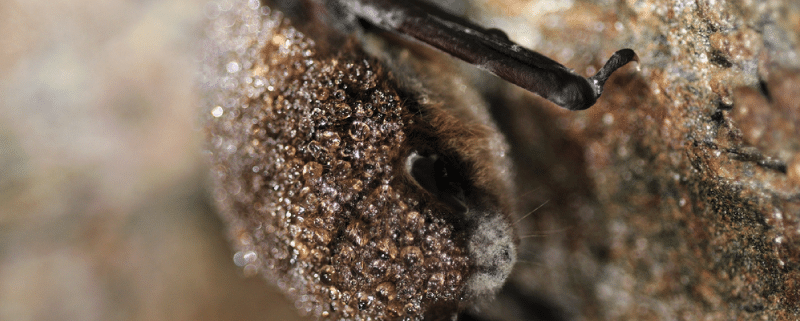Setting the New Standard: Supported Approaches Empower Success
This is the fifth in a series of monthly blog posts exploring the development of a new standard in corporate conservation certification.
It is a widely-held belief that a clinical distance must be maintained between the certifier and the certified, that one body should be the keeper of the standard and the other should be the supplicant, seeking to reach the standard through heroic, unsupported efforts. It all sounds very mythical. Imagine Greek gods up on Mount Olympus watching the efforts of mere mortals below attempting to divine the gods’ intentions and meet their capricious requirements. Distance is thought to be an essential criterion for impartiality that is itself critical for credibility.
Certifying bodies world wide take different approaches. The Marine Stewardship Council (MSC) states that it is committed to being the world’s leading certification program for sustainable wild-capture seafood, but it does not issue certificates or assess fisheries against its own standards. Instead it allows independently accredited bodies to certify adherence to the standards it sets. MSC takes this approach to “maintain impartiality.” The Forest Stewardship Council (FSC) takes the same approach, engaging third-party entities to oversee certification of adherence to its standards.
In contrast to MSC and FSC, The Fair Trade Program and USGBC’s LEED program embrace the applicant. Fair Trade’s model is externally audited, but certification is awarded by the standard-setting body. In contrast, LEED uses transparency, clear standards and external reviewers to ensure impartiality, but provides the applicant with the information needed to compile an application—a clear view of how their efforts will be recognized and what extra efforts are needed to achieve certain levels of recognition.
In previous blog posts I talked about why our design of a new standard for corporate conservation embraces scalability and transparency as critical to accessibility and broad adoption. This post sets out an argument that a supported approach is also essential. Bringing the gods down from the mountaintop to interact with the mortals below will aid broad adoption and can be done without compromising credibility. A supported approach is essential for accessibility. It can be protected through the radical transparency designed into the program.
The Global Reporting Initiative’s Learning Services Program issued a Starting Points paper called “GRI Sustainability Reporting: How valuable is the journey?” The paper explores the experiences of organizations of all types and sizes with GRI’s reporting process. It concludes that it is not easy for those reporting for the first time to understand what the GRI sustainability reporting process involves. It also concludes that the journey towards the reporting process is crucial to the final product. Preparing an application or a report towards recognition should not be the goal. Rather, the goal should be creating sustainable projects and processes to support the application and/or report.
Just like GRI, the Wildlife Habitat Council is as interested in the journey towards certification as in the final destination. With our new standard, WHC Conservation Certification, support will be offered at a number of different points along the journey. We believe that conservation and education programs are more sustainable through an approach that considers context, encourages flexibility and embeds efficiencies through actively sharing knowledge and encouraging cross-pollination within and across industry sectors about challenges, innovations and success stories.
At the beginning of the journey, WHC seeks to work with a potential applicant to ensure they are building the strongest possible program. The British Standards Institution developed a “Guidance for Community Sustainable Development” (BS8904). This guidance could easily have been titled a “Guidance for Sustainable Corporate Conservation” given how close it hews to the decision tool WHC uses to engage the right people, at the right levels, from the right places in successful corporate conservation projects. This tool will be the first support mechanism on the journey to certification. The WHC decision tool, like BS8904, considers context as a key to success. It involves the following steps: Agreement on a Goal, Engagement of Stakeholders, Definition of Issues, Identification of Resources, Selection of Options, Implementation of Projects, Evaluation of Results, and Learning from the Process. Through this tool, WHC helps an applicant translate a corporate goal to a site-specific action and helps a corporate CSR professional translate sustainability objectives into meaningful projects.
Throughout the journey, WHC will provide guidance documents for a variety of types of conservation and education projects that an applicant can attempt. Each guidance document will contain information to allow the applicant to prepare a successful and meaningful project and prepare for certification. The guidance documents are not action plans. They do not elucidate the steps required, and adherence to them does not guarantee certification. The guidance will show the applicant what documents, data and descriptions are needed for to apply for Conservation Certification.
As the applicant completes projects and seeks to be recognized under the new standard, they will be supported throughout the application process with an online application tool that presents a series of questions walking an applicant through the activities they have implemented to improve their habitat, better manage wildlife species and educate a variety of audiences. Each applicant will have their own personal journey through the application process that will mirror their approach to project implementation but provide WHC with enough consistency and alignments to allow for effective evaluative reporting.
To ensure impartiality, WHC will separate the program support function from the certification function and govern the system to ensure that the two functions operate independently of one another. The transparency designed into the new Conservation Certification will highlight this separation and show how it is enforced.
WHC seeks to empower employees and others to implement meaningful conservation projects on corporate lands. It seeks to engage CSR professionals, Chief Sustainability Officers and EHS managers in using conservation and education to meet conservation goals that align with larger landscape efforts. Ultimately, it seeks to increase the amount of land being managed towards a conservation goal and the number of people engaged with that goal. In the world of Voluntary Sustainability Standards, WHC wants to empower, not enforce.

